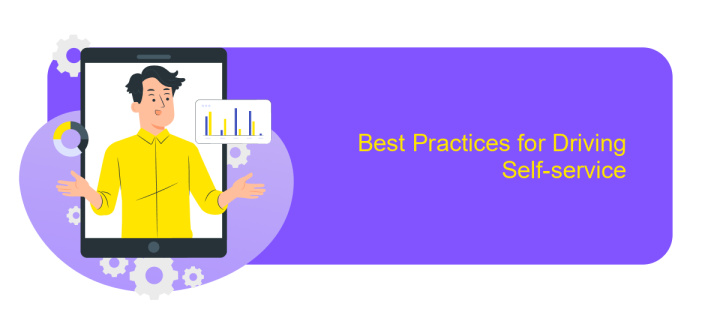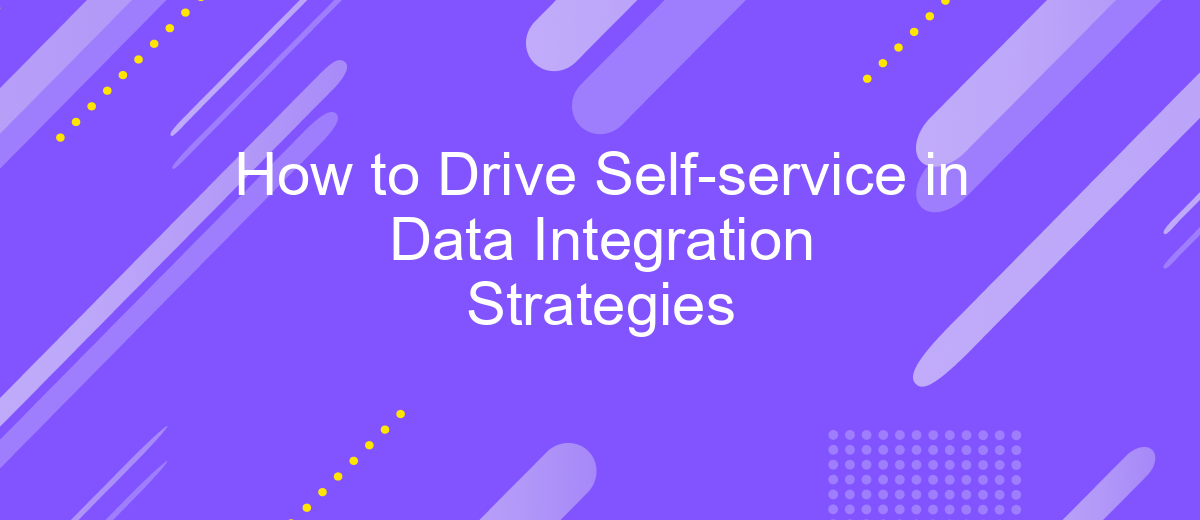How to Drive Self-service in Data Integration Strategies
In today's data-driven world, empowering teams with self-service capabilities is crucial for efficient data integration. This article explores practical strategies to enable self-service in data integration, allowing users to access, manage, and utilize data without heavy reliance on IT departments. By fostering a culture of autonomy and providing the right tools, organizations can streamline processes and enhance data-driven decision-making.
Introduction
In today's data-driven world, the ability to efficiently integrate and utilize data is critical for businesses seeking to gain a competitive edge. Self-service data integration strategies empower users to access, manage, and analyze data without relying heavily on IT departments. This democratization of data not only accelerates decision-making processes but also fosters innovation across organizations.
- Enhanced accessibility to data for non-technical users
- Reduced dependency on IT for data-related tasks
- Faster decision-making and problem-solving
- Increased innovation through broader data utilization
Implementing self-service in data integration strategies requires careful planning and the right tools to ensure data quality and security. By enabling users to take control of their data needs, organizations can unlock new opportunities for growth and efficiency. This article explores the key components and best practices for driving self-service in data integration, helping businesses to harness the full potential of their data assets.
Benefits of Self-service in Data Integration

Self-service in data integration empowers users by allowing them to independently manage and integrate data without relying heavily on IT departments. This autonomy accelerates decision-making processes as users can quickly access and manipulate data to meet their specific needs. By reducing the bottleneck of IT intervention, organizations can achieve greater agility and responsiveness to market changes, enhancing overall productivity and operational efficiency.
Moreover, self-service tools like ApiX-Drive simplify the integration process by offering user-friendly interfaces and pre-built connectors for various applications. This ease of use enables even non-technical users to set up and manage data integrations effortlessly, promoting a culture of data-driven decision-making across the organization. As a result, companies can leverage real-time data insights to drive innovation and maintain a competitive edge in their industry.
Challenges in Implementing Self-service

Implementing self-service in data integration strategies can be a complex endeavor, presenting several significant challenges. Organizations often face hurdles related to data quality, user adoption, and governance, which can hinder the effectiveness of self-service initiatives.
- Data Quality: Ensuring that data is accurate, consistent, and up-to-date is crucial. Poor data quality can lead to incorrect analyses and decisions.
- User Adoption: Encouraging users to embrace self-service tools requires training and a shift in mindset. Resistance to change can slow down adoption rates.
- Governance: Maintaining control over data access and usage while promoting self-service can be challenging. Effective governance frameworks are essential to prevent data misuse.
Addressing these challenges requires a strategic approach, including robust data management practices, comprehensive training programs, and well-defined governance policies. By tackling these issues head-on, organizations can successfully implement self-service in their data integration strategies, empowering users to make data-driven decisions confidently.
Best Practices for Driving Self-service

Implementing self-service in data integration strategies requires careful planning and execution to ensure user adoption and efficiency. Start by establishing a clear governance framework that outlines data standards, security protocols, and user roles. This foundation will help maintain data quality and compliance.
Invest in user-friendly tools and platforms that facilitate easy data access and manipulation. Providing intuitive interfaces and comprehensive documentation can significantly enhance user experience and reduce the learning curve. Additionally, continuous training and support are crucial to empower users and keep them updated on best practices.
- Define clear data governance policies
- Choose user-friendly tools and platforms
- Provide comprehensive training and support
- Encourage collaboration and knowledge sharing
- Monitor and refine processes regularly
Encouraging a culture of collaboration and knowledge sharing can further drive self-service adoption. Create forums or communities where users can share insights, troubleshoot issues, and learn from each other. Regularly monitor the effectiveness of your self-service initiatives and make necessary adjustments to continually improve the process.
- Automate the work of an online store or landing
- Empower through integration
- Don't spend money on programmers and integrators
- Save time by automating routine tasks
Conclusion
Driving self-service in data integration strategies is essential for empowering users and enhancing operational efficiency. By enabling non-technical users to handle data integration tasks, organizations can reduce bottlenecks and accelerate decision-making processes. Key to this approach is the implementation of intuitive tools and platforms that simplify complex integration workflows, allowing users to connect disparate data sources seamlessly.
One such tool is ApiX-Drive, which offers a user-friendly interface and robust functionality for automating data integration without requiring coding skills. By leveraging platforms like ApiX-Drive, organizations can democratize data access and foster a culture of self-sufficiency. This not only optimizes resource utilization but also drives innovation by enabling users to experiment and derive insights independently. Ultimately, a well-executed self-service data integration strategy leads to more agile and responsive business operations, positioning companies to better navigate the complexities of the modern data landscape.
FAQ
What is self-service in data integration?
How can I implement self-service data integration in my organization?
What are the benefits of self-service data integration?
How can I ensure data security and compliance in self-service data integration?
What are the common challenges in driving self-service data integration?
Apix-Drive will help optimize business processes, save you from a lot of routine tasks and unnecessary costs for automation, attracting additional specialists. Try setting up a free test connection with ApiX-Drive and see for yourself. Now you have to think about where to invest the freed time and money!


